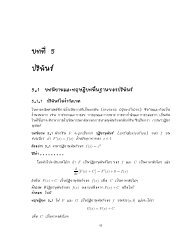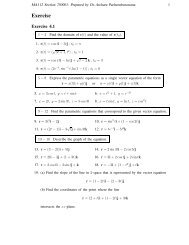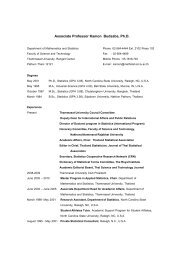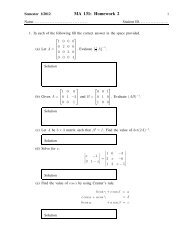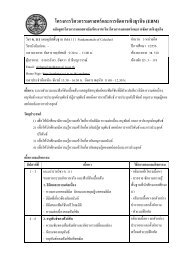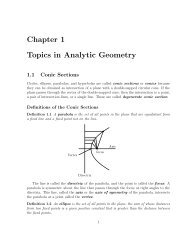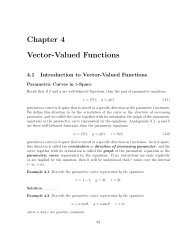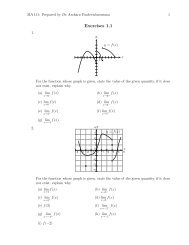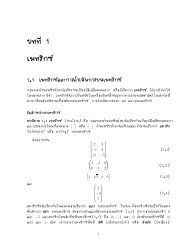Chapter 1 Topics in Analytic Geometry
Chapter 1 Topics in Analytic Geometry
Chapter 1 Topics in Analytic Geometry
You also want an ePaper? Increase the reach of your titles
YUMPU automatically turns print PDFs into web optimized ePapers that Google loves.
MA112 Section 750001: Prepared by Dr.Archara Pacheenburawana 47The follow<strong>in</strong>g cross products occur so frequently that it is helpful to be familiar withthem:i×j = k j×k = i k×i = j(3.18)j×i = −k k×j = −i i×k = −jThese results are easy to obta<strong>in</strong>; for example,i j k∣ ∣ ∣ ∣∣∣i×j =1 0 0∣0 1 0∣ = 0 0∣∣∣ 1 0∣ i− 1 0∣∣∣ 0 0∣ j+ 1 00 1∣ kHowever, rather than comput<strong>in</strong>g these cross products each time you need them, you canuse the diagram <strong>in</strong> Figure below.kijGeometric Properties of the Cross ProductThe follow<strong>in</strong>g theorem shows that the cross product of two vectors is orthogonal to bothfactors.Theorem 3.11 If u and v are vectors <strong>in</strong> 3-space, then:(a) u·(u×v) = 0 (u×v is orthogonal to u)(b) v·(u×v) = 0 (u×v is orthogonal to v)Example 3.22 Let u and v be vectors as <strong>in</strong> Example 3.21. Show that u×v is orthogonalto both u and v.Solution .........Theorem 3.12 Let u and v be nonzero vectors <strong>in</strong> 3-space, and let θ be the angle betweenthese vectors when they are positioned so their <strong>in</strong>itial po<strong>in</strong>ts co<strong>in</strong>cide.(a) ‖u×v‖ = ‖u‖‖v‖s<strong>in</strong>θ(b) The area A of the parallelogram that has u and v as adjacent sides isA = ‖u×v‖ (3.19)(c) u×v = 0 if and only if u and v are parallel vectors, that is, if and only if they arescalar multiples of one another.



